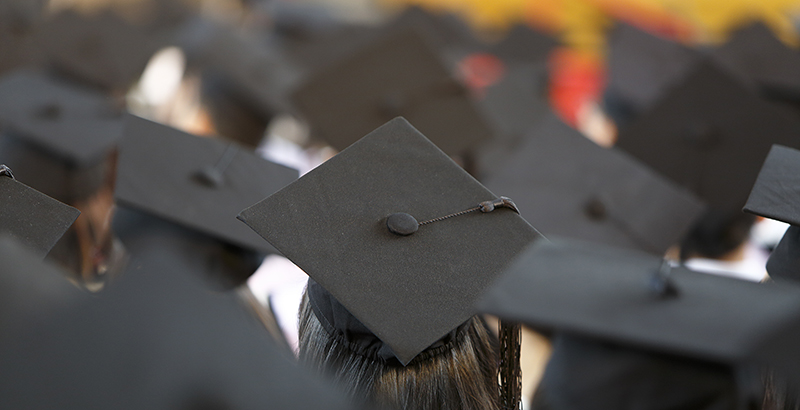Secretary of Education Betsy DeVos just had the best week of her tenure so far, thanks to a well-orchestrated back-to-school tour that ended in Indiana on Sept. 15. She had a clear, attractive message and stuck to it: We need to unleash the creativity and innovation of our schools and educators, and stop trying to make one size fit all. She also demonstrated a true commitment to sector-agnosticism — she visited traditional public schools, not just private and charter ones — and celebrated schools that are as far from her own conservative Christian upbringing as one can imagine — and did it all with grace and humor. Well done, Madame Secretary!
The best part, in my view, came toward the end, when she toured the 21st Century Charter in Gary, Indiana. I’m biased; it’s run by a friend, Kevin Teasley, who has been around the choice and charter schools movement for a long time, and once even dabbled in punditry and policy wonkery. But unlike some of us unreformed reformers, he’s done penance by actually starting and running schools. He will be the first to tell you that he’s made mistakes and gotten a lot wrong, but he also learned some things over the years and is now getting some things very right.
That’s the case at 21st Century Charter, located in what may be the poorest, toughest small city in America. Kevin has come to some conclusions that don’t sound all that remarkable at first: That college — or at least postsecondary education — is essential for poor kids to make it into the middle class; and that it’s not enough to exhort his students to raise their aspirations, or even prepare them academically. For teenagers who know almost nobody who has ever scaled the cliffs to college, they need to actually experience it. As in: go to a college campus while still in high school, take real college courses, and find some success.
Thus, at Kevin’s school, “dual enrollment” is as it sounds: Students are enrolled in both high school and college at the same time. In fact, a big chunk of his budget goes to pay for tuition at local institutions of higher education; to afford it, he slimmed down his own “high school” offerings. And it’s working. “We’ve graduated 14 students in recent years who earned their associate degree with us,” he told me recently. And then there’s Raven Osborne, an incredible young woman who received her bachelor’s degree from Purdue University before graduating from high school (and earned well-deserved national fame in the process).
“Our approach helps kids who come from homes that are mostly void of any college experience understand the rigors of college, and learn what a real college classroom is like,” Teasley says. “If they fail, we are there to support them. But we provide supports right away, so most don’t fail. We don’t just send kids off to college and say swim for your lives. We send confident kids off to college knowing they know how to swim.”
This is the sort of innovative, outside-the-box “rethinking” that DeVos is encouraging. But what makes 21st Century Charter remarkable is that it’s a whole lot different from much of what passes for “dual enrollment” these days. That’s because a lot of what falls under that name is something of a fraud. Rather than send high school students to college campuses to take real college courses from real college professors, many states’ “dual enrollment” programs have high school students take so-called college courses at their high school, taught by high school teachers, with no external validation that what is learned is actually college-level. Oops.
Now, I suppose there are arguments for such an approach, mostly logistical. It’s so much easier — maybe even safer — to have high schoolers take college courses at their own high school. But how do we actually know that the courses are legit? (We don’t.) And what about exposing kids to the broader college experience? (We won’t.)
DeVos might argue that any form of dual enrollment is “innovative.” But this is where innovation runs headlong into another value, namely quality. Especially because education is, in part, a commodity, and because credentials hold clear value in the labor market, there is a risk that some purveyors of education will differentiate themselves, and win consumers, by offering something of value (a diploma, college credit) for minimal effort. It’s the diploma mill problem. And it’s real.
This doesn’t mean we should give up on “innovation,” or parental choice, much less on quality college-level work for high schoolers who can handle it. It does mean, though, that we have to strike some sort of balance between those values and the notion of standards. Otherwise an innovative drive toward “competency-based learning” devolves into fraudulent online credit recovery. And a push toward “dual enrollment” becomes an easy, competency-free way to earn college credits — much less work than, say, taking and passing an Advanced Placement exam. And innovation and choice get a bad name.
Get stories like these delivered straight to your inbox. Sign up for The 74 Newsletter


;)
